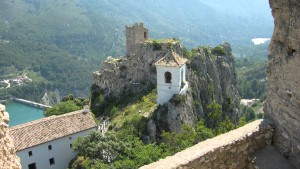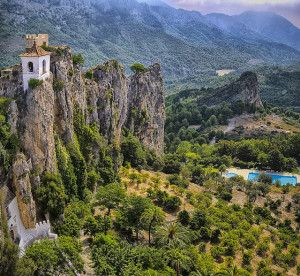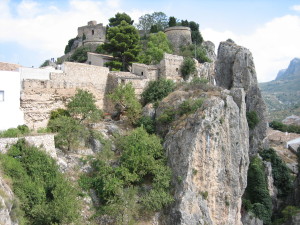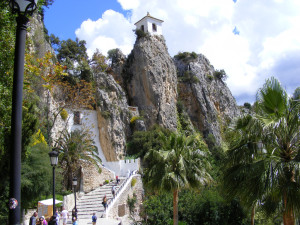Guadalest Information
Guadalest is a small village on the Costa Blanca and it has become a very well-known and much visited tourist destination. In part this is because of its close proximity to Benidorm which allows for tours to be offered to Guadalest as it is only 30 minutes’ drive from the coast. Guadalest is a very pretty and historic small town and you will see the spectacular images of Guadalest on many Costa Blanca postcards. Guadalest is one of the most popular tourist attractions on the Costa Blanca. Guadalest is a village sitting on top of a mountain. The village appears perched on a tiny pinnacle rising into the sky which makes it look absolutely amazing. This gives beautiful views of the green valley with many other mountains in the background. Guadalest is famous for two buildings. First is Guadalest castle (Castell de Guadalest) which can only be accessed by walking through a 15 foot long tunnel carved out of the rock. This is known as the Portal de San Jose. When you get through the tunnel you see the old village houses and it feels like you have entered an ancient time. You can visit the restored house of the Orduna family to get an idea of what it used to be like living in ancient times in Guadalest. The streets of Guadalest are cobbled, there are little squares, a school and an old. Make sure you look to the right of Guadalest and you will see beautiful views of the valley which contains a dam and reservoir – the Embalse de Guadalest, built between 1953 and 1963. The other famous building that you will often see photographed or on postcards is the white bell tower of Penon de la Alcala which rises up seemingly precariously perched on the mountainside. The village of Guadalest only has about 200 inhabitants and needless to say most of these work in tourist related jobs. You will find many shops selling souvenirs, crafts and local produce such as honey, wine, handbags etc. Guadalest also has a number of small museums many of them converted from little caves in the mountainside. The castle at Guadalest was built by the Moors over 1,300 years ago. In 1609 King Felipe the third ordered all the Moors to be expelled leading to an uprising after which the Moors were defeated and left Spain. Also of note was in 1848 when powder kegs blew up (the reason is not known) the castle was abandoned.
| Places of Interest | Festivals and Holidays | Eating out the Theatre | Sightseeing and Tours |
 |
 |
 |



